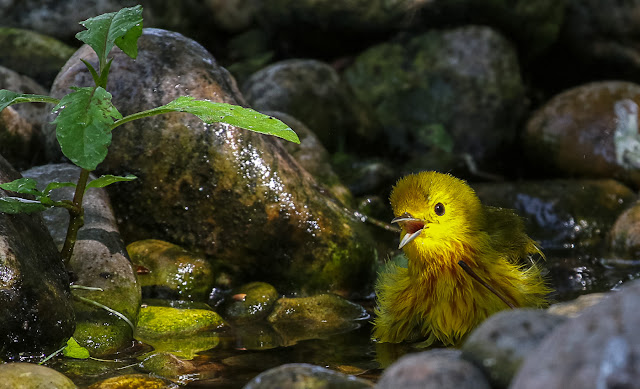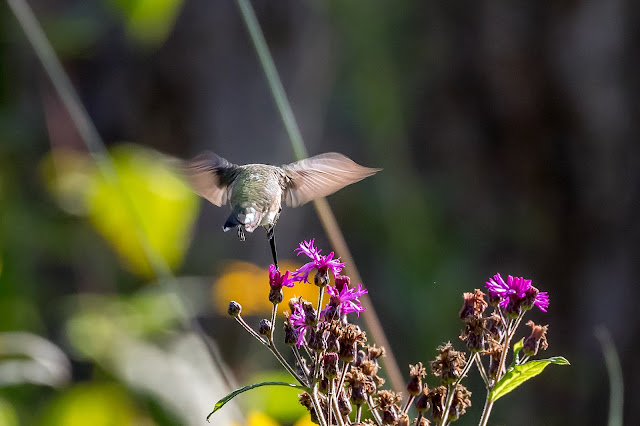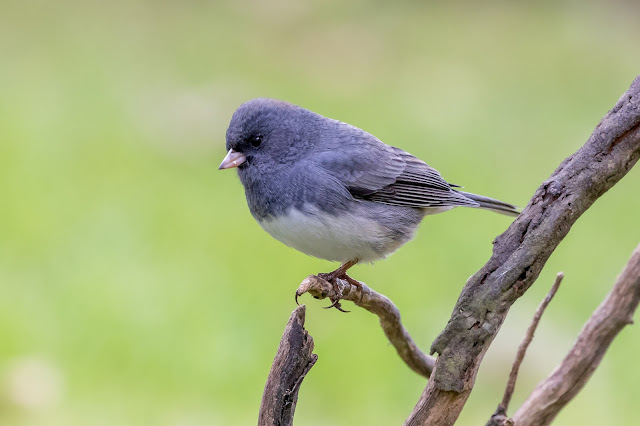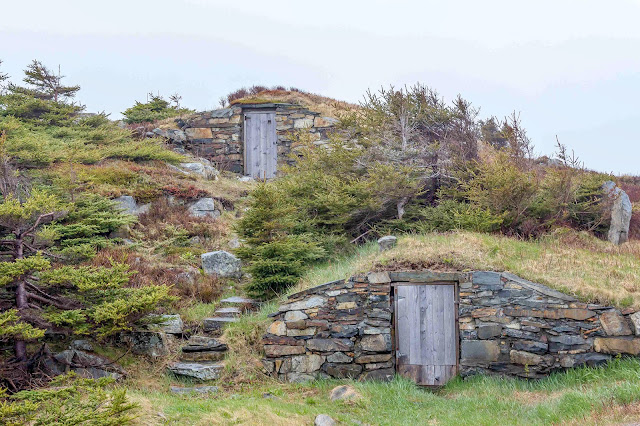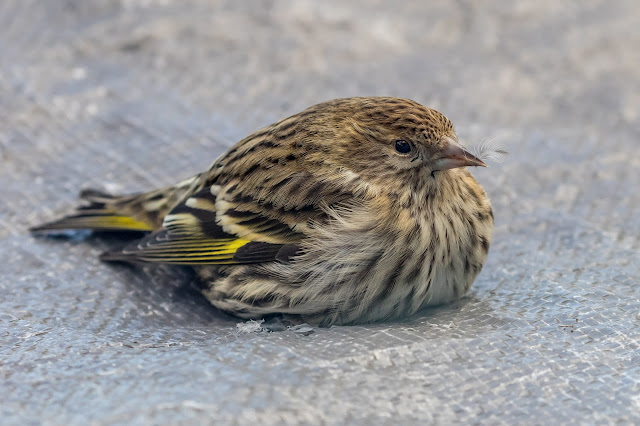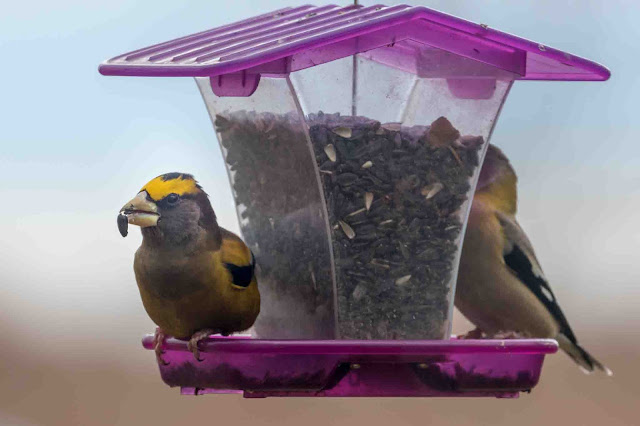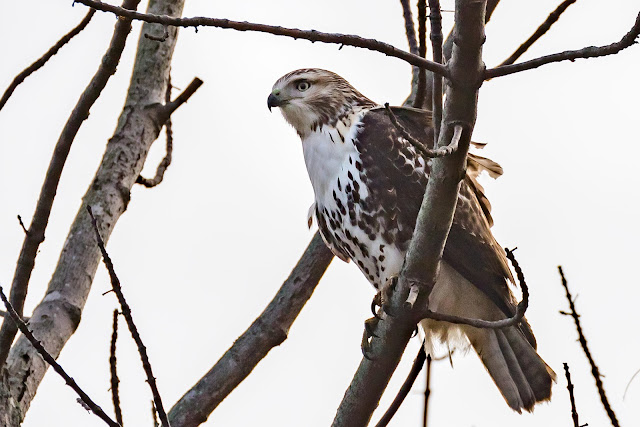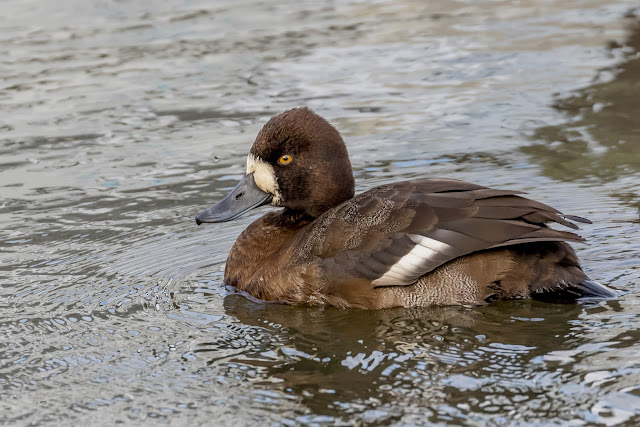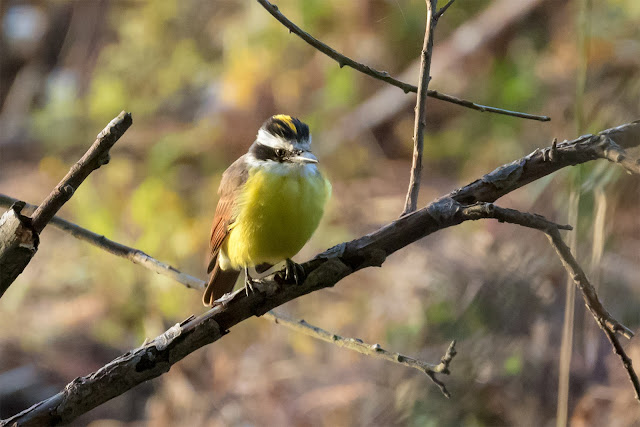Great Kiskadee, Rondeau Provincial Park, Nov 2 2018. As long as it keeps showing up I will keep posting its photo. Such a rare bird and to have it around for this long is a real treat. It is finding enough to eat, frogs are still out and there are lots of berries for it. Pitangus sulphuratus Food - Great Kiskadees eat both animal prey and fruit. They hunt like a flycatcher, fish like a kingfisher, and forage like a jay. They perch on treetops in open areas, sallying forth to snatch flying insects in midair. They also glean through grass, shrubs, and trees for beetles, grasshoppers, spiders, millipedes, lizards, snakes, and small mice. Near bodies of water, they drop from perches to hover above the water’s surface and pluck prey such as small fish and tadpoles. They also eat fruit from trees, vines, cacti, and sometimes handouts from people. And they’ll boldly steal food from cat and dog dishes. source - https://www.allaboutbirds.org/guide/Great...
